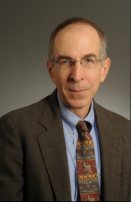Ethics, Conflict, and Resolution
Ethics, Conflict, and Resolution

The dominant theme for this year’s Point of View conference, which will be held on the Arlington Campus in Founders Hall Room 125 on February 14 and 15, will be Ethics, Conflict, and Resolution. All speakers are experts within their respective fields, and Laurence Susskind, a prominent figure within the field of conflict resolution, will be the keynote speaker. The principal goals of this conference are to reflect critically upon the value commitments that make up conflict analysis and resolution and to examine their implications to develop new ideas, strategies, and goals for our work. The following topics will be addressed: Value judgments and reflective practice; Alternative approaches to ethics; Gender, ethics, and conflict; Reflections on basic needs; The moral lives of conflict actors; Power; Tensions of Peace and Justice; Inquiry into the ethics of knowledge production; Codes, conventions, and professional constraints; Culture and the political economy of funding; Human rights and conflict. During the conference, a normative perspective is taken on these topics. Underlying this perspective is a fundamental notion that our field, both analysis and resolution, is axiological. What exactly does this mean?
The axiology of conflict does not demand blind obedience to the “priests” of moral wisdom who are searching for the fount of universal moral truths. Nor does axiology require that we elevate our minds to the lofty heights of "pure" moral reasoning without regard to the lived experiences of conflict actors. An axiology of conflict requires that we probe the ways in which conflict actors make meaning, digging beneath the conflict dynamics, excavating the social landscape, and looking beneath the shallow layer of “facts” to examine the actors’ value commitments that lay seemingly dormant. [I believe that insight into conflict axiology draws upon the work of Ludwig Wittgenstein concerning his insights about the deep grammar of our language. A deep grammar of conflict calls for attending to the conditions, characteristics, and forms of life that explain how terms are used within a community of speakers. So, what is the deep grammar of the conflict parties? What is our own deep grammar?]

Conflict resolution is normative by nature. The aspiration for positive change rests on the normative ideals about pro-social (read: humanitarian) patterns of behavior, thought, and emotions. Attempts to engage, entice, enhance, and empower the conflict parties to address their grievances without violence must recognize the practitioners’ adherence to the value of peace and justice.
Do we find axiology in conflict analysis? Some would say “No,” since conflict research is, should be, value-neutral—unaffected by the researchers’ moralistic sentiments. I believe that such a boundary between the ‘is’ and the ‘ought’ of conflict cannot be sustained. In our attempt to understand and explain conflict, we analysts tacitly interweave the “is” of protracted violent conflict with our ideas of “ought” and “ought not.”
Consider a simple experiment. Try to extract the normative content from detailed case studies of genocide, human rights abuses, crimes against humanity, ethnic cleansing, and bigotry. It cannot be done without bizarre distortions. Read, or reread, the Human Rights Watch reports of mass violence in Darfur, the witnesses’ accounts of genocidal violence in Rwanda, the testimonies of victims of brutality before the Commission of Tribunal of Truth and Reconciliation in South Africa, and the indictments by the ICC for crimes against humanity. Notions such as genocide, human rights, crimes against humanity, and others cannot be reduced to value-neutral properties such as features of bodily movements.These notions are charged with normative content.
Consider Vamik Volkan’s notion of chosen trauma. The intense feelings of humiliation, vengeance, and hatred linked to chosen traumas foster violent reactions against those who presumably perpetuated their suffering. Similarly, Johan Galtung’s notion of structural violence as systematic inequality between the “haves” and “have-nots” cannot be understood as morally neutral. The suffering of the “have-nots” represents a radical injustice that is life-threatening . While chosen traumas are social psychological maladies and structural violence is systematic injustice, both are real and morally negative. So, the axiology of conflict interlinks value judgments with the meanings of many conflict-related encounters.
For another example, consider the meaning of violence to actors. Going beyond the notion of violence as a physical force, we find that conflict actors assign binary meaning to violence through normative categories, like purity or danger, friend or foe, virtue or vice. For conflict actors, the implementation of violence against an adversary is rationalized as avenging a moral offense or injustice, honoring “our” God, or securing the homeland, among many other possible meanings. At the core of such rationalizations are strong moral concepts, and what makes them so strong is that they are situated deeply in notions of identity and difference. Enemy militants are characterized negatively— vicious, power-hungry, depraved, or obsessed with evil. Protagonists are identified positively—virtuous, heroic, brave, and honorable. In acting justly, protagonists are positioned as morally pure, adorned by God, living in the image of our sacred figures, and endowed with virtues given only to those born in the sacred homeland.
Within conflict axiology, one important topic centers on the conflict protagonists’ normative reflection on horrific experiences. There is a common need for many protagonists to address “What is the right thing to do for myself and for others?". Some conflict actors rationalize their campaign of violence as necessary in a larger campaign against the enemy. Others may engage in acts of compassion by offering sanctuary to potential victims. It is from this perspective that one might say that protracted conflicts have their own normative pathways on which participants may tread, some being militant pathways while others are more humanitarian. No matter which one is chosen, these pathways comprise varying elements of a conflict actor’s moral life.
### Photo: Banksy Palestinian by Flickr user Ryan Riedel.




